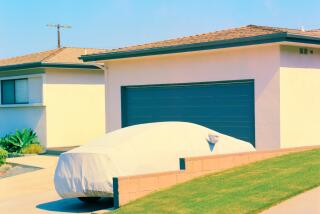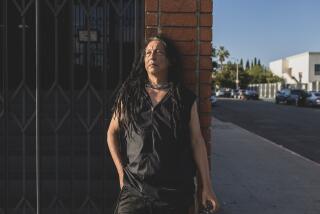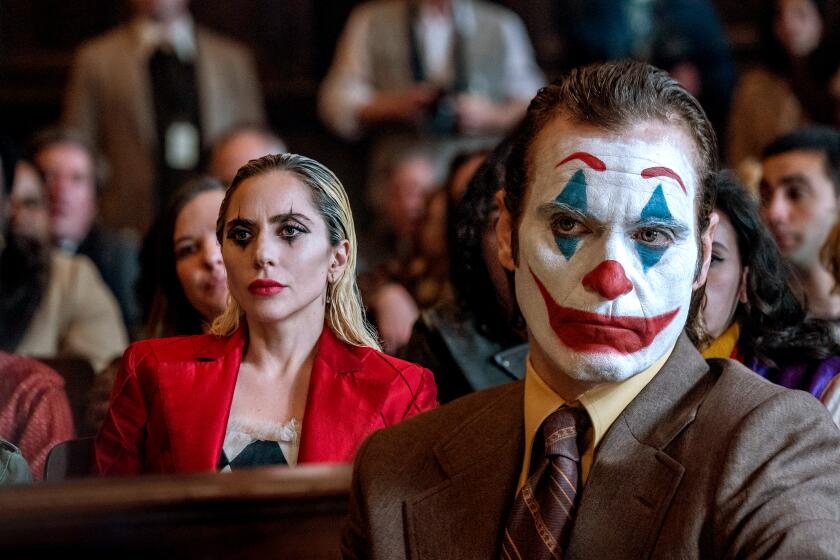Even still, Roger Deakins has a zeal for photography
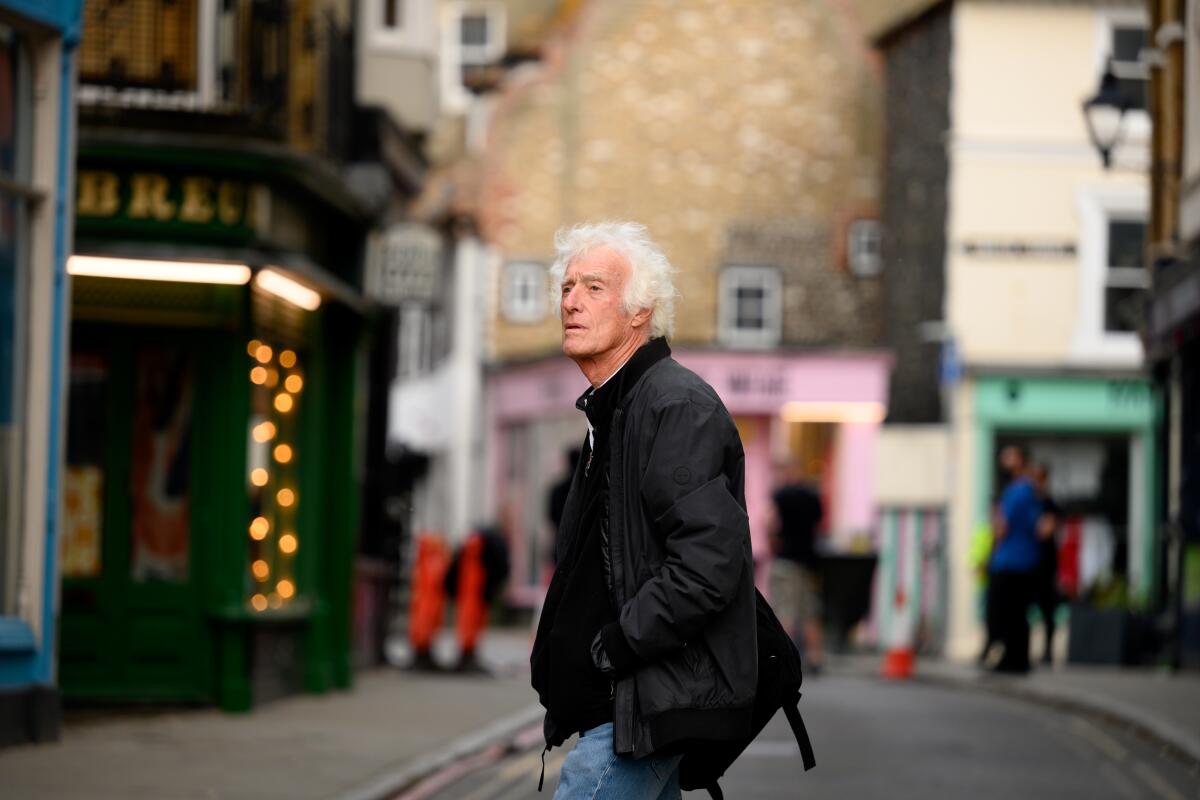
What does one of the world’s most sought-after cinematographers do to relax when he’s not scouting, planning or shooting a movie? He takes still photographs, of course.
“It’s just me and my camera. I’m not under stress, under pressure of a schedule or anything,” says two-time Oscar winner and 15-time nominee Roger Deakins.
“It’s my excuse to be out there just observing the world. When I was a teenager, I toyed with the idea of becoming a photojournalist, and then I segued into National Film School and documentary filmmaking. But yeah, when I wander around, I take a camera, and it’s just relaxation. I mean, I love images.”
Deakins’ two current projects are as personal as can be — one to him: a book of 50 years’ worth of his black-and-white still photographs, “Byways”; the other to auteur Sam Mendes and his new film, “Empire of Light.”
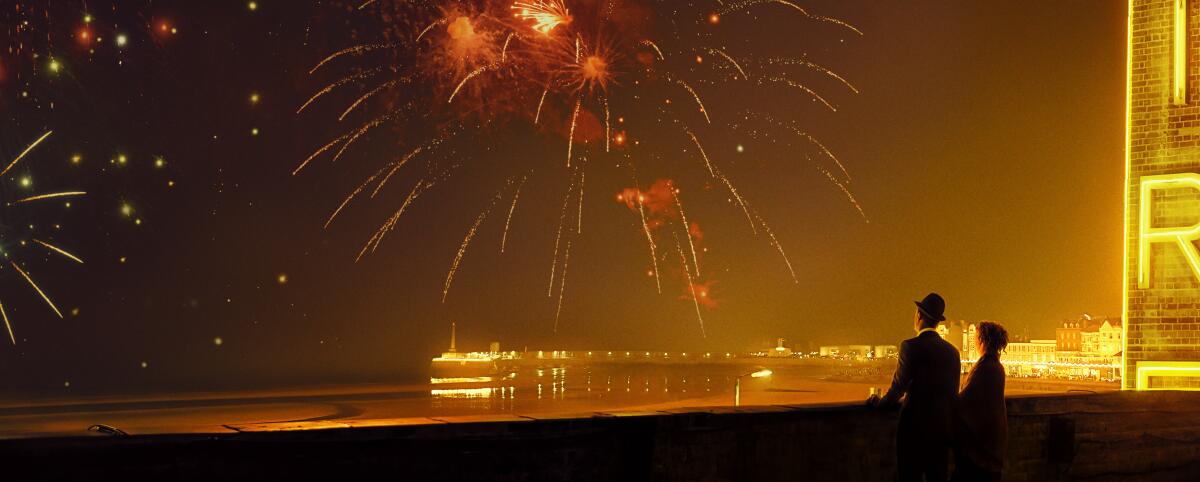
“Byways” captures the world through a largely impromptu eye. As opposed to the painstaking coordination of film sets, these shots are often off the cuff.
“It’s more the instinct of the moment than generally on a movie,” Deakins says. “On movies, you still need to be instinctive and reactive to what actors do and everything else that happens on the day. But these are very much just me walking around.”
About the first third of “Byways” is a time capsule of life in a rural town in the early ’70s, an assignment Deakins had when working for an art center in northern England. There are men with tractors, people with sheep, dogs with jobs, a determined fellow carrying dried brush on his back who brings to mind the cover of Led Zeppelin’s fourth album. There are shots of an old-fashioned English fairground, the kind Deakins says you don’t find anymore, with kids on spinning rides in front and signs in the back beckoning patrons to “Boxing” or the “Stripteaze.”
At his exhibition at the Peter Fetterman Gallery in Santa Monica, he says of that print, “I remember when my brother took me to the fairground where I grew up in Torquay; you could go in and join the boxing — they would call for somebody in the audience to come up and attempt to outbox their main guy. There was a bearded lady, there was the sheep with the two heads and strip shows.”
The photographer says there’s no conscious theme or sequencing to the rest of the collection, though considering the title, the wide variety of locales (Melbourne, Australia; Budapest, Hungary; Albuquerque, N.M.; and Romania, among them) and the shots’ unregulated movement through time, it can’t help but feel like a uniquely curated travelogue. Instead of famous landmarks, its souvenirs are moments, some ironic, some intimate. There’s no Eiffel Tower.
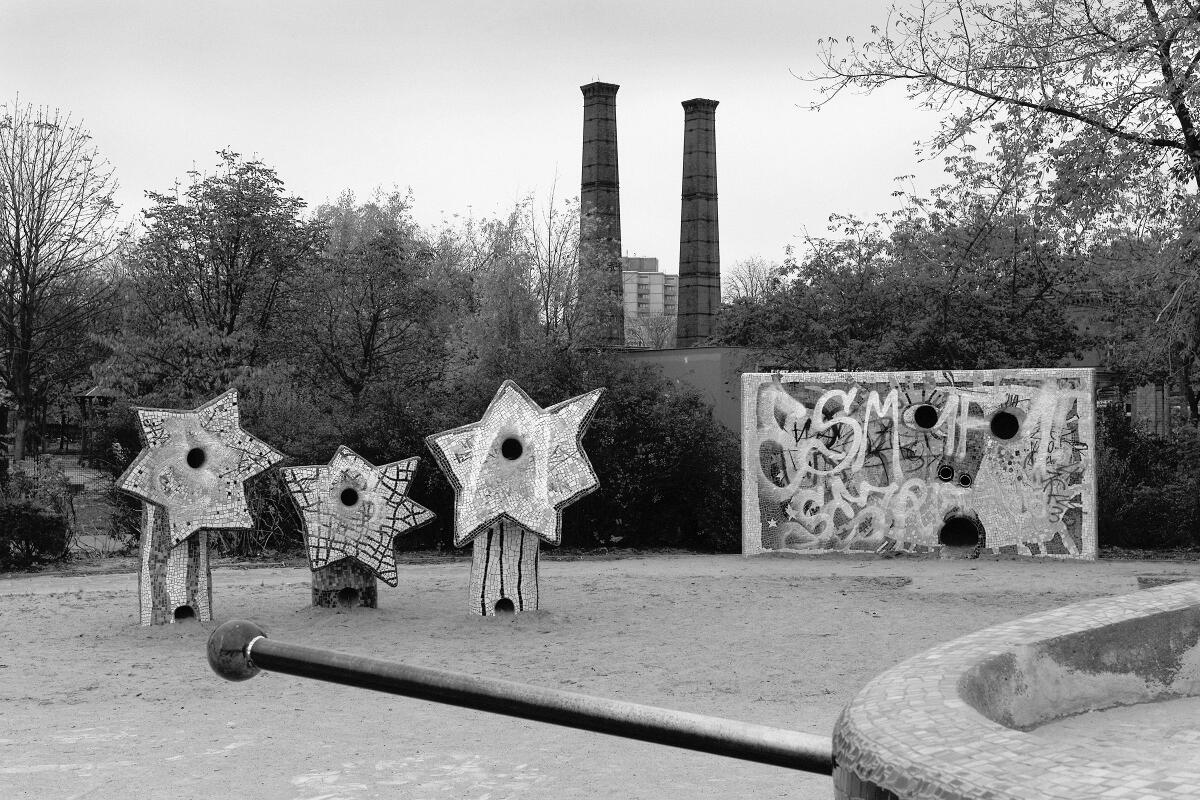
Its postcard of Berlin is not the Brandenburg Gate, but an empty playground with holes cut in a wall that form an alarming face, with something that looks like a tank turret in the foreground and smokestacks in the background. The face could be screaming.
For an image captured during a storm, Deakins let the shutter click away, hoping for — and miraculously getting — that ideal lightning strike in the desert expanse, this one bisecting the building in the center of the frame (during the filming of Denis Villeneuve’s “Sicario”).
But even for a photo he waited literally months to get, of a barren tree leaning over a cliff path, there’s a certain quality of serendipity.
“I live about four miles [from there], and I jogged that cliff path. I spent a long time looking at that tree and waiting for winter, when it was bare. Sometimes they cut down the bracken and everything; this was one time the tree was opened up. I took quite a few when the tree was exposed like that with different skies, but there’s something about this bland, empty sky and the light hitting the water that makes this much simpler.”
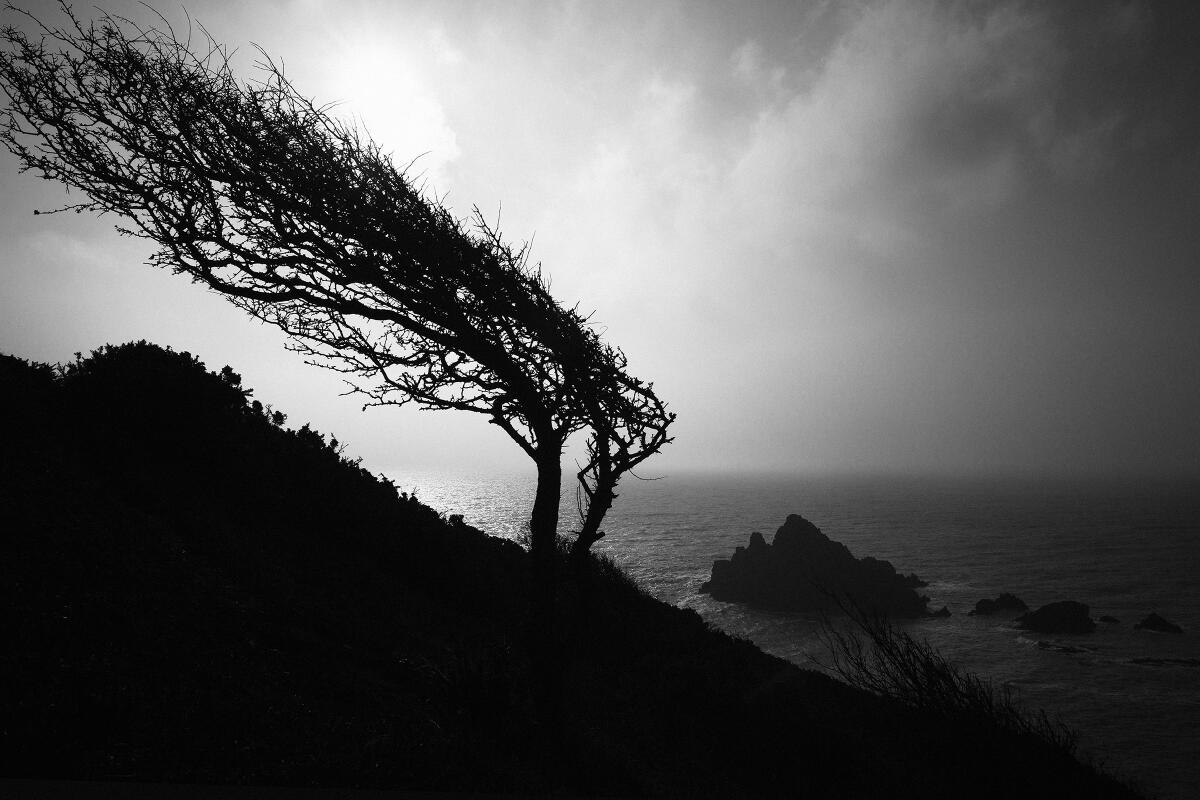
In another image, a sign with “Jolly Roger” on it is in the foreground by a dock; just behind it, a British flag flies. But in the background, much smaller, is the detail Deakins waited for — a girl nearly horizontal on a swing. “The dad was just out of frame ... I loved the idea that she’s in flight and she’s just an element in the whole picture. Some people don’t even notice it, which is a shame.”
Then there is the “guy throwing a stick off the promenade and the dog jumping after it,” he says of a photo he shot from below, drastically exaggerating the height. When he got into position and waited for it to happen again, just as the dog jumped off and Deakins snapped, “the dog looked at [Deakins’ wife] James and I. The dog’s looking at the camera.”
Deakins’ other current project is the latest in his long collaboration with Mendes, “Empire of Light.” The film draws from events and people in Mendes’ life and represents his only solo writing credit to date (his only other screenplay shared with Krysty Wilson-Cairns for “1917,” for which Deakins won his second Oscar).
“A lot of it is very connected to his growing up,” Deakins says. “I think he was a little bit more insecure about the script and about doing it. We’ve always talked about a script and gone through it. But I felt there was more of that on ‘Empire’ than on the other movies. He was using me as a sounding board, really, for his script ideas.”
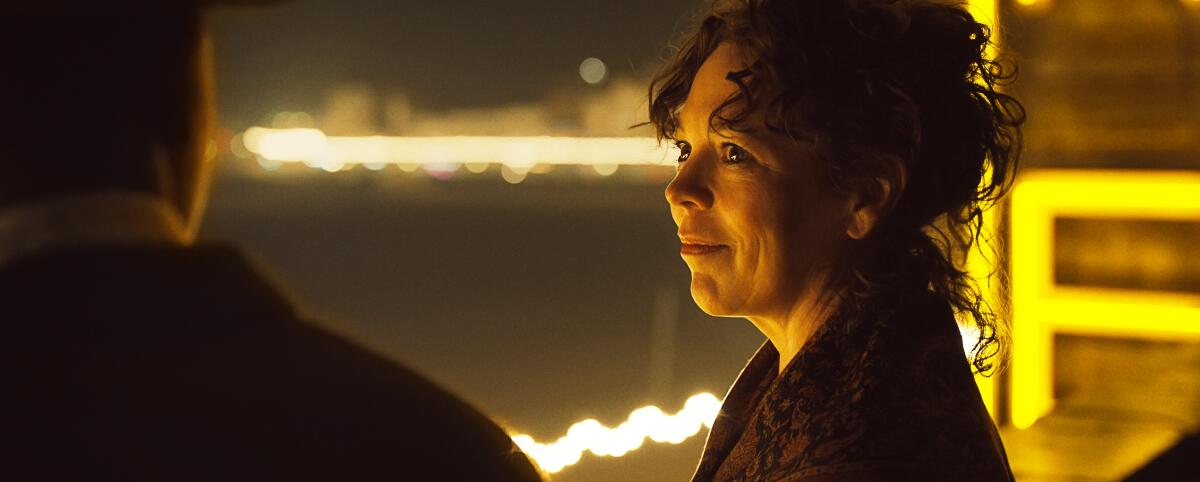
Though many of the frames in “Byways” capture seaside towns such as the one in which “Empire” is located, many of them British, Deakins says he didn’t draw on them for the movie’s visual vocabulary — there’s a bifurcation between the two media for him: “I don’t really connect the film work to my stills work at all. Obviously, I have a sort of sense of composition, but that’s it. [Still photography] is something just much more personal.”
The filmmakers worked to make the cinema that is the main setting of “Empire” “an inviting place, as opposed to the exterior. That’s exactly what Sam said when we were first talking about the script: that it’s important that it felt warm and a refuge for Hilary. That’s where her friends were. And he talked about it becoming even warmer as the film progresses.”
The film’s look is notable for conveying changes in temperature — the chilly seaside air as winter approaches; the cozy refuge of the cinema; the even-more secret bower in which the lovers rendezvous (as opposed to the cheap sterility of the film’s other, loveless entanglement); and most of all, the drastic shifts in Hilary’s moods. Mendes has acknowledged that character, played with heartbreaking subtlety and commitment by Olivia Colman, is inspired by his mother and her struggles with mental illness.
Deakins says, “The moment where social services come along with the police and bust in the apartment and take her away, I think that was hard for Sam, frankly, because that is something that he lived through a number of times with his mother.”
That scene features some of the most expressive light in the film, conveying Hilary’s dark emotional state and raging paranoia.
“We talked about doing something that is [harsher] without it being unbelievable. We simply thought, ‘Well, she’s been messing with the apartment, so why don’t we just take a shade off her table lamp and use a bare pole?’ When she leans in, getting angry, and she leans towards [fellow theater worker and lover] Stephen, then you get that really harsh light coming up into her face and it almost bleaches her out. It’s just a practical bulb.
“If you look really closely, there’s a bit of tape on the bulb facing the camera because otherwise it would flare the lens, and I hate lens flare. You do little things to make it work, but it’s basically lit by a bare bulb.”
More to Read
From the Oscars to the Emmys.
Get the Envelope newsletter for exclusive awards season coverage, behind-the-scenes stories from the Envelope podcast and columnist Glenn Whipp’s must-read analysis.
You may occasionally receive promotional content from the Los Angeles Times.

